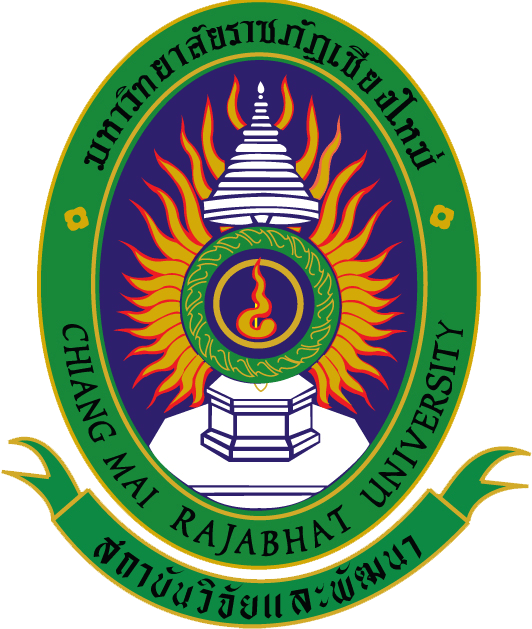
ระบบสารสนเทศงานวิจัย สถาบันวิจัยและพัฒนา มหาวิทยาลัยราชภัฏเชียงใหม่
Research Information System(RIS)
ฤทธิ์ยับยั้งการเจริญของแบคทีเรียบางชนิด และฤทธิ์ต้านการอักเสบจากสารสกัดใบต้นยางพลวง ในพื้นที่ตำบลขี้เหล็ก อำเภอแม่ริม จังหวัดเชียงใหม่
อาจารย์ ดร.อ้อมหทัย ดีแท้
คณะวิทยาศาสตร์และเทคโนโลยี
คำสำคัญ :
เลขทะเบียน :
1634-65-SCI-CMRU
บทคัดย่อ
การวิจัยในครั้งนี้มีวัตถุประสงค์เพื่อศึกษาฤทธิ์ในการยับยั้งเชื้อแบคทีเรียก่อโรคทางเดิน อาหาร ฤทธิ์ต้านการอักเสบ และศึกษาความเป็นพิษของสารสกัดจากใบต้นยางพลวงต่อเซลล์ เพาะเลี้ยง โดยใช้สารสกัดหยาบจากใบต้นยางพลวง (ใบตองตึง) ชนิดพันธุ์ต้นสูง และต้นเตี้ย ทาการ สกัดด้วยน้ากลั่น และเอทานอล ด้วยวิธีการแช่หมัก (maceration) ผลร้อยละผลผลิต (% yield) ที่ สูงที่สุดและน้อยที่สุด คือ สารสกัดเอทานอลและสกัดน้ากลั่นจากใบต้นยางพลวงชนิดต้นสูง ให้ผล 5.080 และ 2.455 เปอร์เซ็นต์โดยน้าหนัก ตามลาดับ ผลทดสอบการยับยั้งเชื้อแบคทีเรีย 10 ชนิด ด้วยวิธี agar disc diffusion โดยทดสอบที่ความเข้มข้นของสารสกัดเท่ากับ 500, 250, 125, 62.5, 31.25 และ 15.62 มิลลิกรัมต่อมิลลิลิตร ผลการทดสอบพบว่า สารสกัดน้ากลั่นจากใบต้นยางพลวง ชนิดต้นเตี้ย ให้ผลการยับยั้งเชื้อแบคทีเรียแกรมบวกได้ดีที่สุด ที่ความเข้มข้น 500 mg/ml สามารถ ยับยั้งเชื้อ Bacillus cereus ได้ดีที่สุดอย่างมีนัยสาคัญทางสถิติ (P < 0.05) โดยให้ผลค่าวงใสการ ยับยั้งเท่ากับ 15.60 มิลลิเมตร และให้ผลค่า MIC และ MBC ดีที่สุดเท่ากับ 250 mg/ml ในการยับยั้ง และฆ่าเชื้อแบคทีเรียได้ดีที่สุด และเป็นแบคทีเรียแกรมบวกทั้ง 3 ชนิด คือ Enterococcus faecalis, Enterococcus faecium และ Bacillus cereus และสารสกัดน้ากลั่นจากใบต้นยางพลวงชนิดต้น เตี้ย ไม่มีความเป็นพิษต่อเซลล์เพาะเลี้ยง และให้ผลฤทธิ์ต้านการอักเสบ โดยยับยั้งการผลิตและหลั่ง สาร nitric oxide ได้ดีที่สุดเท่ากับ 72% ดังนั้นสารสกัดน้ากลั่นจากใบต้นยางพลวงชนิดต้นเตี้ยมีสาร
ออกฤทธิ์ทางชีวภาพที่ดีที่สุด ดังนั้นจึงควรนาสารสกัดจากธรรมชาตินี้มาประยุกต์ใช้เป็นส่วนผสมของ ผลิตภัณฑ์ยับยั้งเชื้อแบคทีเรียก่อโรค และต้านการอักเสบ เพื่อลดการใช้สารเคมีและเพิ่มมูลค่า สมุนไพรพื้นบ้านได้ต่อไปในอนาคต
Abstract
The research aimed to study the anti-bacterial activities against intestinal bacterial infection of crude extracts of Diptercarpus tuberculatus Roxb. leaf from tall and short stem species, which tested the anti-inflammatory activity and cytotoxicity test. Plant samples were extracted by using distilled water and 95% ethanol by maceration method. The highest and the lowest percentage of yield (% yield) were ethanolic and aqueous extracted from the leaves of the tall stem species, as 5.080 and 2.455 % yield, respectively. All of crude extracts were investigated for their inhibitory effects against ten kinds of bacteria, by using an agar disc diffusion method at five concentrations of 500, 250, 125, 62.5, 31.25 and 15.62 mg/ml. The results showed that the aqueous extract from the leaves of short stem species, had the highest antibacterial effect against gram-positive bacteria as Bacillus cereus. At a concentration of 500 mg/ml, it was the most antibacterial effect with statistical significance (P < 0.05) showed the inhibition zone as 15.60 mm. It also had the highest MIC and MBC values as 250 mg/ml, which inhibiting 3 gram positive bacteria as Enterococcus faecalis, Enterococcus faecium and Bacillus cereus. In addition, The aqueous extract of leaves from short stem species were no cytotoxicity of cell culture, and had the highest anti-inflammatory effects by the inhibiting the production and secretion of nitric oxide as 72%. Therefore, the aqueous extract of leaves from short stem species had the effective bioactive compounds. Furthermore, this natural extract should be applied as an ingredient in products to inhibit pathogenic bacteria and antiinflammatory, to reduce the use of chemicals and also increase the value of local
herbs in the future.
ไฟล์งานวิจัย
13 19 ส.ค. 2565
กองทุนวิจัย มหาวิทยาลัยราชภัฏเชียงใหม่
202 ถ.ช้างเผือก ต.ช้างเผือก อ.เมือง จ.เชียงใหม่ 503000
053-88-5555